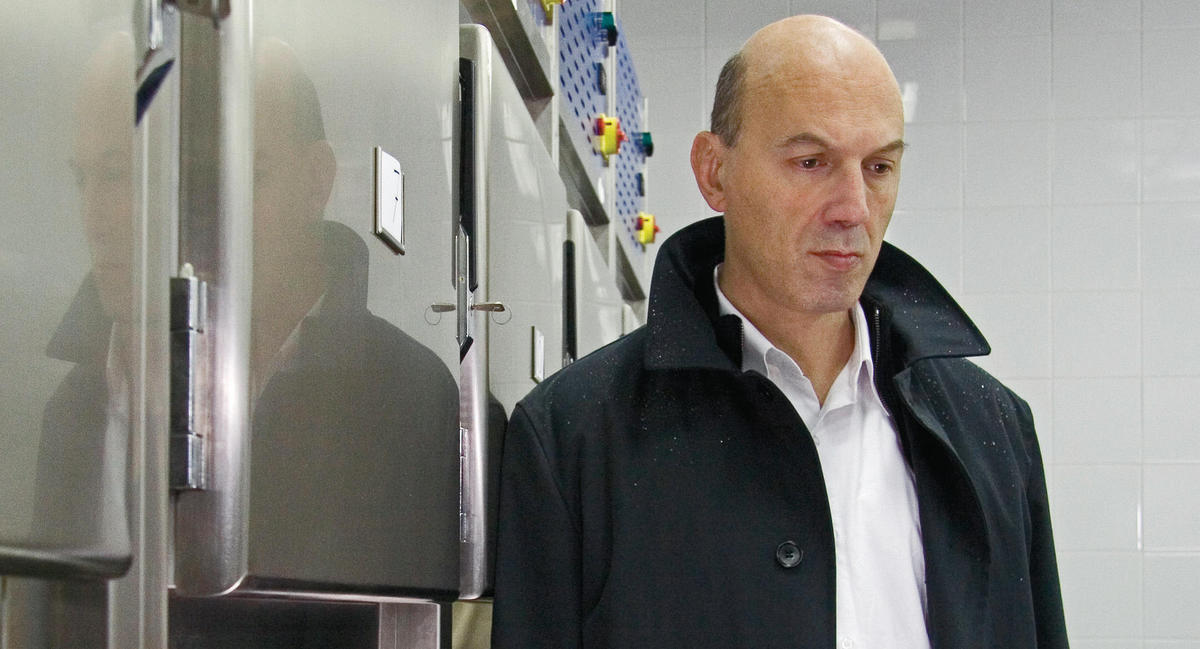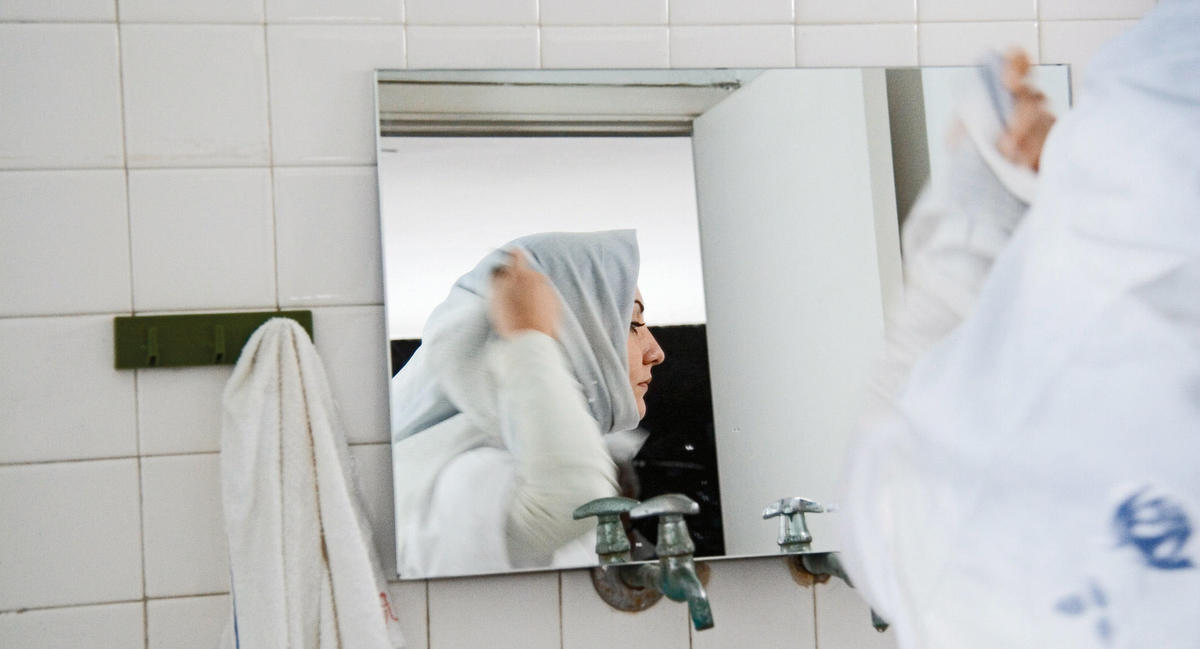
“Fuck the sun!” says Khalil Shams, the main character in Ghassan Salhab’s The Last Man, between gritted teeth. Khalil is sitting at a restaurant table, exchanging idle conversation with a group of friends; he has his back to the restaurant’s large window that looks out over the street. It’s been pouring rain forever — or at least since the beginning of the scene, where we see Khalil (played by Carlos Shahine) parking his car and hurrying to get inside. Suddenly, the clouds clear for a short moment and a ray of sunshine hits him on the back of his head, illuminating him from behind. He’s at the center of the table. The camera zooms in on him; he brings his hand to his face to cover his eyes, turns his head to look at the sky, and says these three words, almost imperceptibly. But the words are heard at the table, and everyone becomes quiet, maybe owing to the brusqueness of the statement, or maybe because this stillness is not of the restaurant, but of Khalil’s new world, the one into which he’s withdrawn.
The Last Man, which premiered at Switzerland’s Locarno Film Festival and in Lebanon at Ayam Beirut Cinema’iya, uses a well-known cinematic paradigm to explore Beirut’s dark side. It’s a film about vampires, true, but it lacks all the big special effects associated with the genre. There’s the customary bite on the neck, which becomes increasingly precise with each scene, signifying the hero’s transformation and descent to another world; there are dead bodies and mouths smeared with blood. But The Last Man is less a film about a man, a doctor, becoming a vampire, than it is about the concealed space that slowly swallows him. In fact, we know little of Khalil Shams’ character and psychology (a literal translation of his name would be “the companion of the sun”), and even less about his love life, his friends, or his profession. But we do know about his new world, which is made of darkness, of quiet, of wet, of stillness, of loneliness, and of blood, lust, and hunger.
Odd and eerie as it might sound, Beirutis are certainly no strangers to this world. We know it well; it is stealthily inscribed in our psyches from the day we are born. We encounter it on every turn of a street, and it’s one of the reasons we look away like we do when we meet people from our long forgotten past, people we don’t especially want to see. We dwell in it and it surrounds us, but we aren’t aware of it until it accumulates around us like dust, like the dust of the remains of those who were and are no longer.
As for those Beirutis who insist on living in the sun, laughing at the sinister mood of the rest of us, they were forced into our world during last summer’s Israeli war on Lebanon. It was a summer not associated with vacations, sunny beaches, and bronzed complexions. July was dark, lonely, empty, and bloody, just like Ghassan Salhab’s film. And although the film was written and shot before the war, the events it portrays can be considered neither coincidental nor a genius-like premonition of what was to come. The July War merely forced people to see what was always there, to meet the underbelly of their city — and what the film did was to compel them into recognizing their faces in that of a vampire.
It did so slowly, steadily. The Last Man starts like Salhab’s previous films, Phantom Beirut (1998) and Terra Incognita (2002), with scattered scenes and visuals, bits and pieces of dialogue, abrupt cuts and odd montages, scenes that can never fit into a linear narrative but that make sense retrospectively, like the beautiful scene of the water slowly running down and dripping off the staircase in a turn-of-the-century apartment building.
This overture is gradually replaced by more contiguous scenes of less light, less events, less people, less dialogues, less things. Strangely, the darker and scarcer the scenes get, the more their space becomes allegorical, in the sense that everything in it can signify anything else. The meaning is always undone and new associations constantly arise, disabusing the audience of its set of known and well-rehearsed references.
In the catastrophic space that Salhab tries to capture on film (a side-question would be, “How improbable is that?”), a car crash involving the doctor acquires an entirely new signification: the lust for blood, the hunger; the doctor turning away; the doctor, or what remains of him, losing the battle to the vampire; the vampire, a metaphor for the extreme isolation of individuals in Beirut, and their perpetual fight to remain individuals, under the city’s hard rain that never washes anything away. The changes that occur throughout the film affect the character as well as his environment: in keeping with the film’s low-tech style, Khalil remains recognizable to the end, but his gaze becomes intolerable (illustrated in a brothel scene); his reflection ceases to appear in the mirror (same scene, and the one where he meets a lab worker and tells her that “he — the vampire — cannot be filmed”); his voice belongs to another world — all signs of his inexorable journey towards Beirut’s concealed space, the final step being his communion with the veteran vampire who turned him.
In The Last Man, Ghassan Salhab attempts a journey into Beirut’s dark side. The question, of course, is not whether he succeeds– after all, a journey is a journey. Rather, the film’s quest takes the form of a paradox: if you can’t see the reflection of a vampire, how can it appear on film? And if a city is so intent on concealing and forgetting its underbelly, how can anyone represent it, present its visual narrative? A quote from Marx comes to mind: “It is by their imperfections, that the means of production in any process bring to our attention their character of being the products of past labour. A knife which fails to cut, a piece of thread which keeps on snapping, forcibly remind us of Mr A, the cutler, of Mr B, the spinner.” Just as a city that fails to appear reminds us of its vampires.
